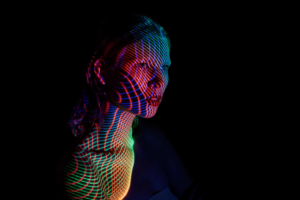Submission to INS International Neuromodulation Society Conference, Paris
Kristen Sparrow • March 08, 2020


I will post this here. With all the uncertainty about Covid 19, the conference may be canceled anyway. For references, please click on link above
Improving autonomic balance by decreasing sympathetic activity and increasing parasympathetic activity is of intense interest in the research community. Improved autonomic balance reduces inflammation implicated in medical conditions from cardiovascular disease to depression, to cancer, to aging. Efforts to “hack” the autonomic nervous system with implanted vagal nerve stimulators have had some success. Transcutaneous Auricular Vagal Nerve Stimulation has the promise of being a safe alternative since it relies on noninvasive afferent input to a peripheral branch of the vagus. Recent research[i] has helped to define best parameters for TAVNS treatment, including frequency, intensity, electrode placement and timing. As with any treatment modality, however, individual patient variation can affect the efficacy of implanted vagal nerve stimulators and TAVNS. There are some exploratory investigations using heart rate variability (HRV) as feedback for implanted vagal nerve stimulation[ii][iii] and for TAVNS also[iv] Acupuncture has been shown to improve autonomic balance[v], so the hypothesis was that TAVNS added to it would further improve HRV and autonomic balance.
Materials and Methods:
Protocol: Patients monitored (HRV) in supine position for 5 minute baseline and then for entire treatment including TAVNS application, needling and resting with needles in for additional 20 minutes. TAVNS applied using clip electrode on the cymba concha bilaterally, and in some instances unilaterally. Frequency of TAVNS varied between, 1 hz, 25Hz, or 100 hz. HRV analysis of 3 minute segments during treatment using several HRV parameters including time, frequency and nonlinear analysis. 1 minute segments for DFAα1 ( a nonlinear parameter) were also charted.
Results:
There was individual patient variation in HRV response with added TAVNS. Patients who showed the most improvement were those who had low HRV to start. Variables that might affect efficacy of TAVNS will be discussed.
Discussion:
The hypothesis that TAVNS would improve HRV did not hold up in all patients. Of the HRV parameters measured and recorded, DFAα1 over one minute segments had the strongest signal/noise ratio so was the most promising as a measure.Furthermore, HRV analysis might have the potential to determine best TAVNS parameters for treatment such as intensity, frequency, duration etc… Individual patients’ HRV data will be presented and discussed.
Conclusions:
TAVNS did not improve HRV in all patients so HRV may help to better define which patients would benefit most from TAVNS. DFAα1 was found to be the most reliable HRV measure.
[i] Current Directions in the Auricular Vagus Nerve Stimulation II – An Engineering Perspective Front Neurosci 13.772 July 24 2019
Eugenijus Kaniusas1*, Stefan Kampusch1,2 et al, Marc Tittgemeyer3,4
[ii] PLoS One. 2017 Oct 27;12(10):e0186068. doi: 10.1371/journal.pone.0186068. eCollection 2017.
Romero-Ugalde HM1,2, Le Rolle V1,2, Bonnet JL3, et al
[iii] Sci Rep. 2018 Mar 1;8(1):3856. doi: 10.1038/s41598-018-21669-3.
Preoperative Heart Rate Variability as Predictors of Vagus Nerve Stimulation Outcome in Patients with Drug-resistant Epilepsy.
Liu HY1,2, Yang Z1, Meng FG3,4, Guan YG5, Ma YS6, Liang SL7, Lin JL8, Pan LS7, Zhao MM9, Qu W1, Hao HW1, Luan GM5, Zhang JG4, Li LM10,11,12,13.
[iv] brain Stimul. 2019 Feb 10. pii: S1935-861X(19)30056-7. doi: 10.1016/j.brs.2019.02.003. [Epub ahead of print]
The influence of respiration on brainstem and cardiovagal response to auricular vagus nerve stimulation: A multimodal ultrahigh-field (7T) fMRI study.
Sclocco R1, Garcia RG2, Kettner NW3, Isenburg K4, Fisher HP4, Hubbard CS4, Ay I4, Polimeni JR4, Goldstein J5, Makris N2, Toschi N6, Barbieri R7, Napadow V8.
[v] Trends Mol Med. 2017 Dec;23(12):1103-1120. doi: 10.1016/j.molmed.2017.10.006. Epub 2017 Nov 20.
Nerve Stimulation: Immunomodulation and Control of Inflammation.
Ulloa L1, Quiroz-Gonzalez S2, Torres-Rosas R3.

